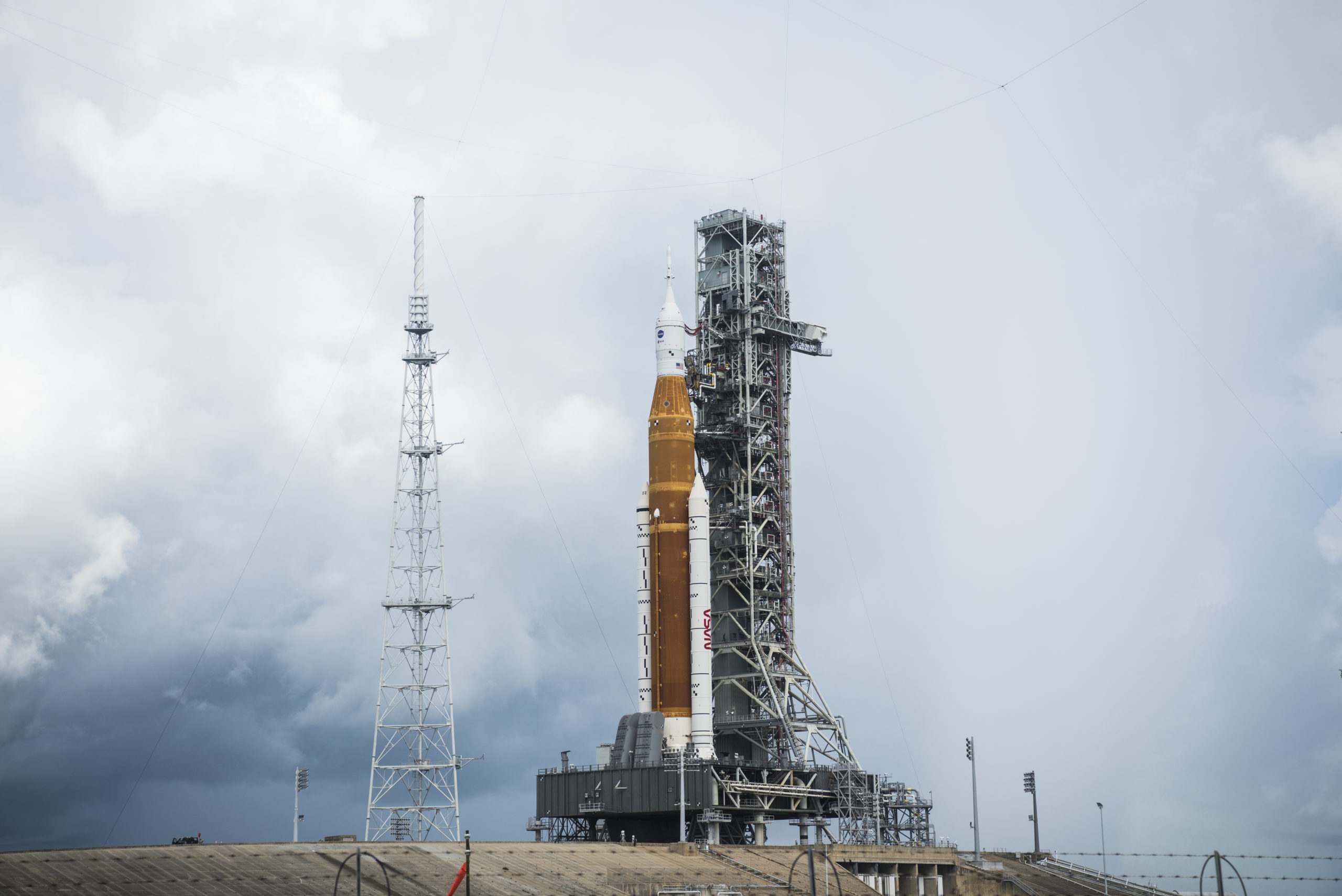
This past weekend, I went up close and personal (as up close and personal as a civilian not employed by NASA or its contractors can get, at any rate!) with the Orion capsule and the SLS. I learned a ton of fascinating stuff about what has gone into making the Artemis 1 launch mission-ready.
Just look at how much is jam-packed onto that stack! Let’s start from the top. (closeup below)
The topmost needle-like section is called the launch abort system. It’s there to propel the Orion spacecraft crew safely away from a failing rocket in the event of an anomaly on the launch pad.
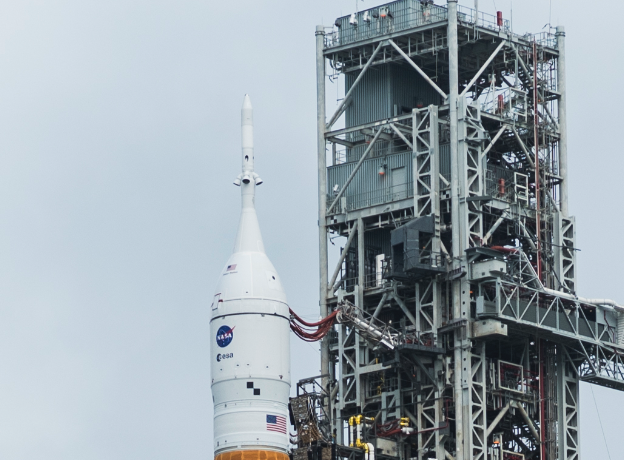
The Orion capsule itself is the section with the small American flag; it can house four astronauts. Currently, it’s hosting three very special mannequins. The minute I heard the engineers talking about how they were filled with radiation measuring equipment, a lightbulb went off.
I suspected these weren’t mannequins at all. They were phantoms.
I was right.

Meet Helga and Zohar, identical phantoms. Except Zohar is wearing a radiation vest. Technically, these two, who are seated in two of the Orion capsule’s four seats, are biologically similar to women, not men, as women are more susceptible to radiation than men.
A phantom is made of materials with radiation characteristics that mimic our own bones, tissues, and organs. We use solid water phantoms in radiation physics to experimentally verify the amount of radiation distributed inside a linear accelerator when it is turned on.
NASA will be using them to see how much radiation astronauts will be exposed to as they travel to the moon. They’re also testing the effectiveness of the vest in protecting vital organs.
This is more important now than it was 50 years ago, since the sun is much more active than it was when we last visited the moon.
It was pretty cool to see something from radiation physics, a material I’ve worked with for years, being used to help protect future space travelers!
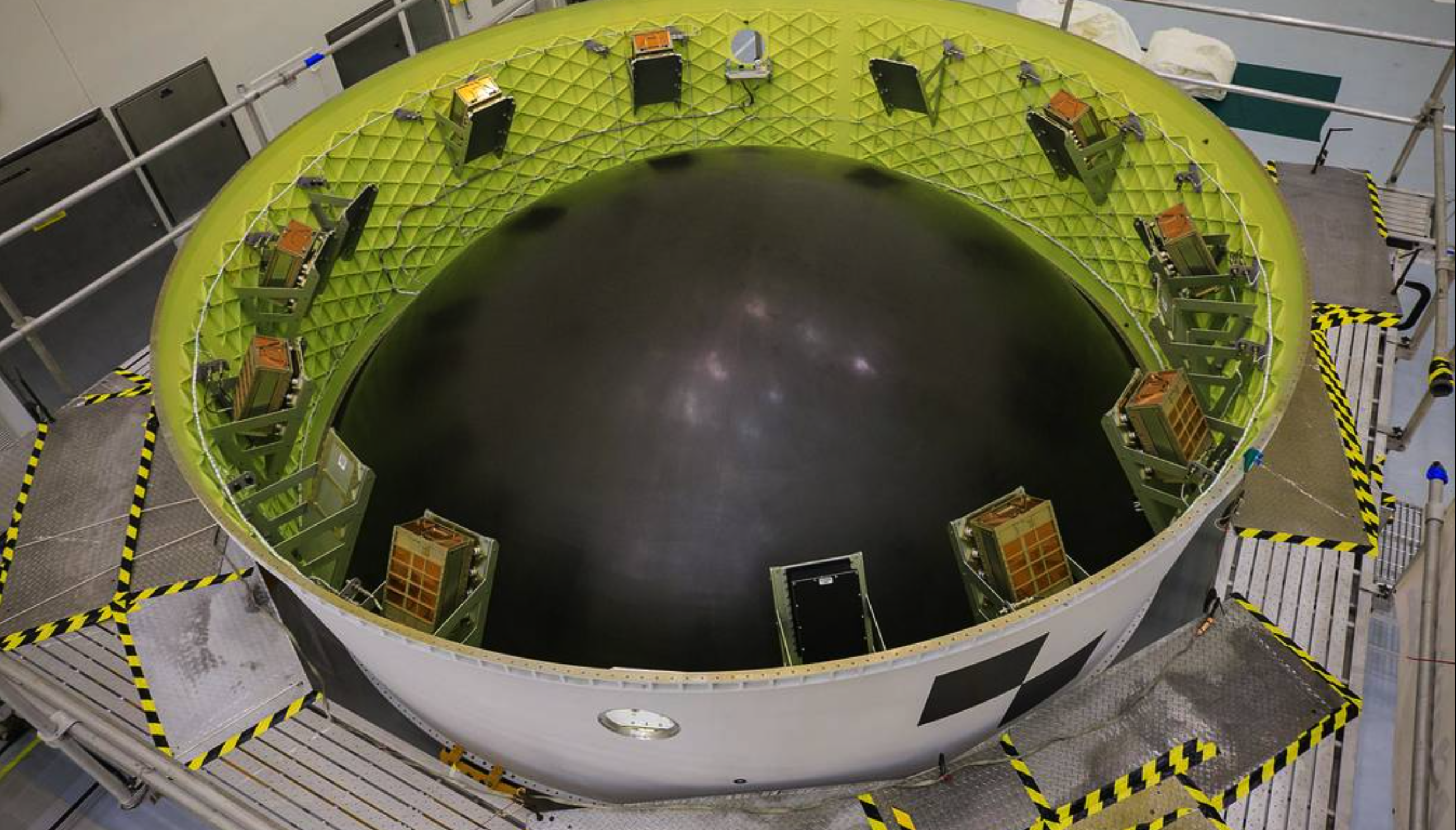
Just below the Orion capsule is a storage ring where ten cubesat satellites reside. These house ten different experiments that will be launched into space—including the world’s first deep-space biology experiment.
A lot of these experiments are testing the effects of radiation outside the Van Allen Belt, and what astronauts traveling to the Moon—and later, Mars—can expect to encounter from GCRs (galactic cosmic rays) and ionizing radiation from our own sun in the form of flares. You can read all about the cubesats here.

See where the NASA and ESA logos are? That’s the service module part of the capsule that will return it to Earth. The lowest white section with the large American flag is the upper stage that’s going to boost the capsule to orbital insertion and then send Orion on towards the Moon.
I have tons more to share with you, but this is getting long so I’ll stop for now.
Unfortunately, despite our best efforts, the weather — and a faulty sensor that wrongly accused poor Engine #3 of not doing its job — joined forces against us.
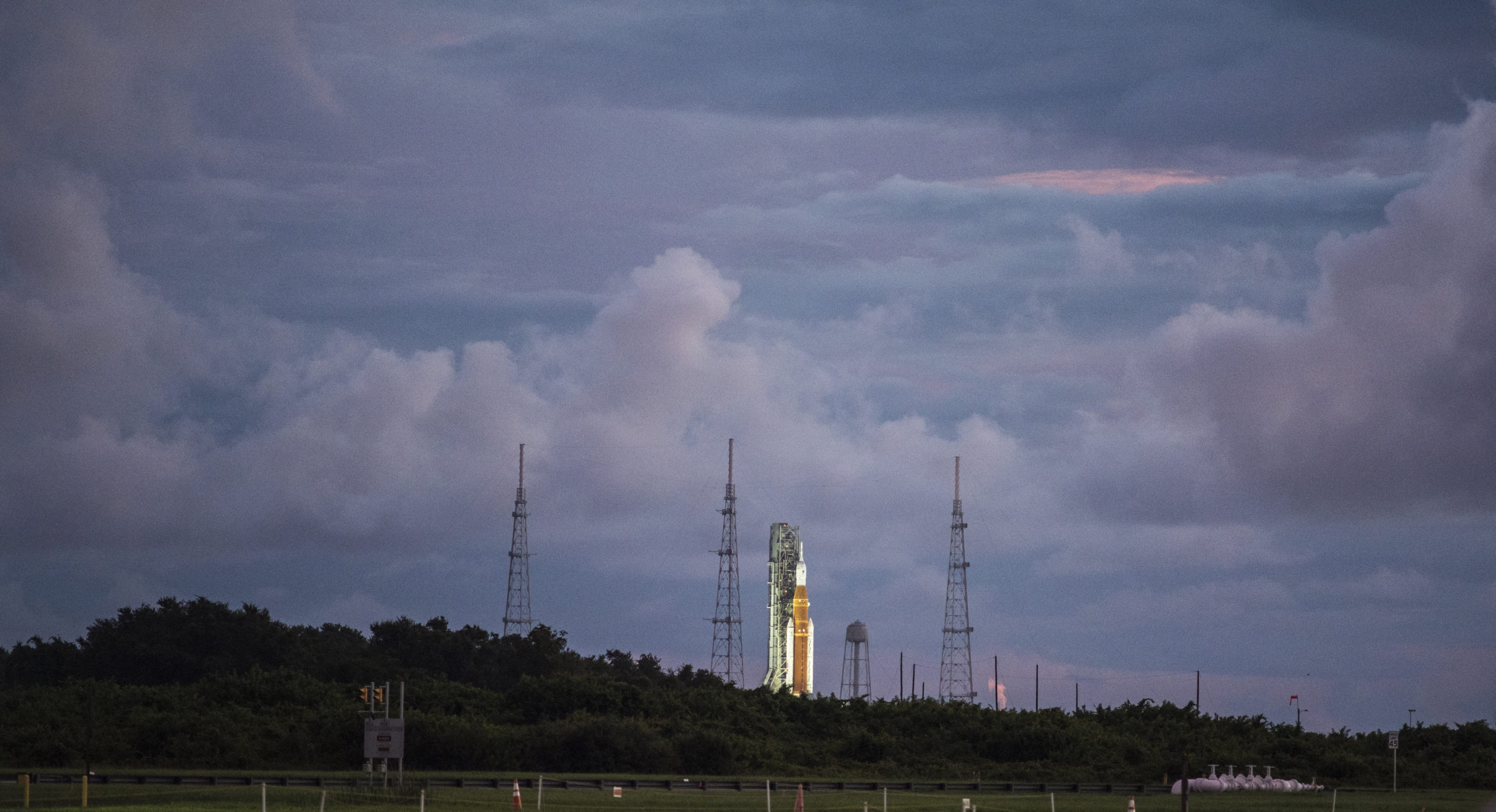
We were go for launch, all of us out at the Press Site in from of the Vehicle Assembly Building at 2 AM, but the launch was scrubbed (we did get some awesome sunrise pics though).
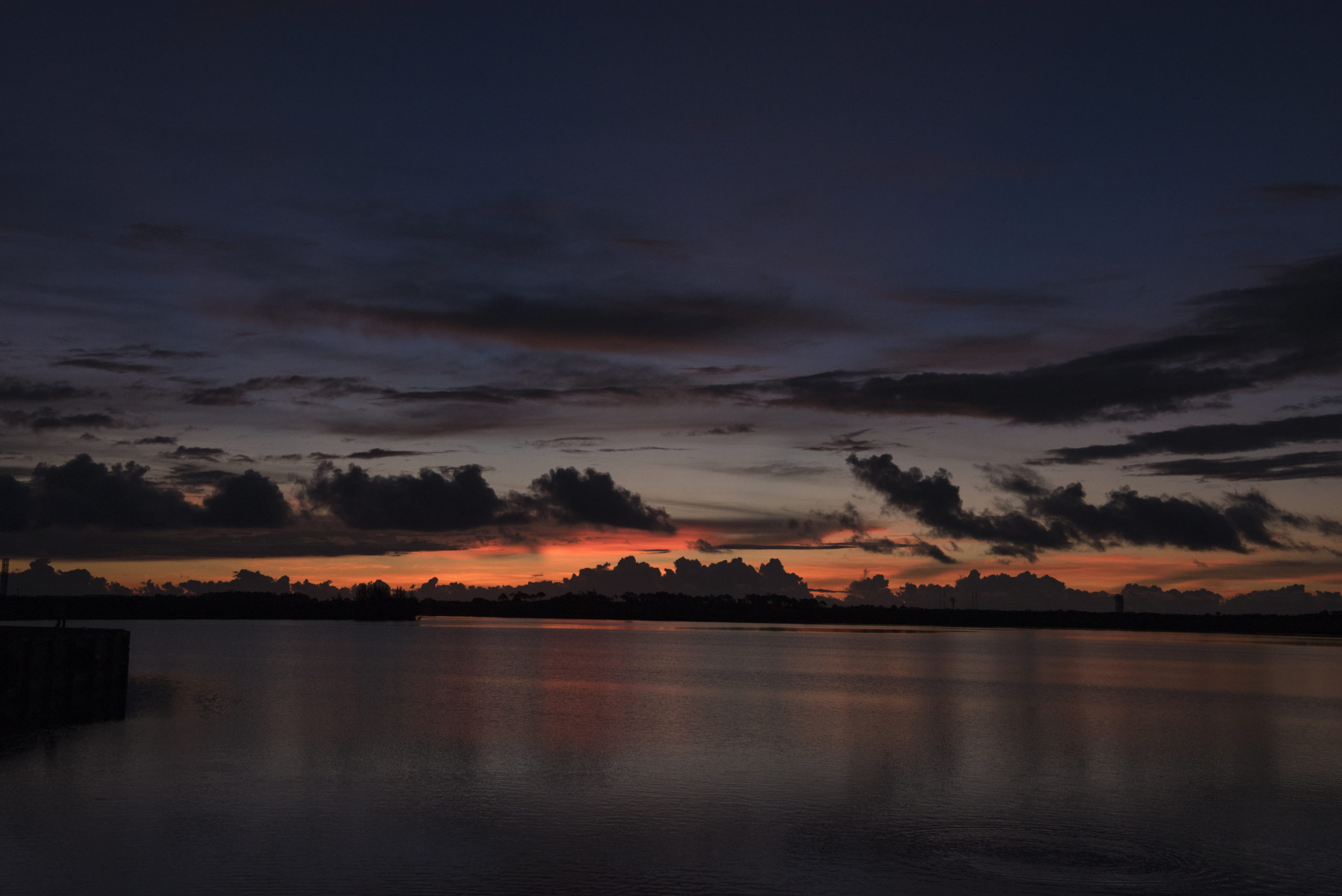
By the way, Engine #3, also known as RS-25 engine #2058, was not to blame for the scrubbed launch. A faulty sensor suggested that the engine was not cooling down to prelaunch temps as it should. Turns out, it had cooled properly. Engine 3 is a bit miffed and has taken to twitter to proclaim its innocence. You can follow it at twitter.com/SLSEngine3.
Unfortunately by the time troubleshooters figured that out, storms were rolling in and what’s known as a Cumulus Cloud Rule violation went into effect, which states:
“Do not launch through or within 5 nautical miles of the nearest edge of cumulus-type clouds with tops higher than the 14˚ F level.
Do not launch through or within 10 nautical miles of the nearest edge of cumulus clouds with tops higher than the -4˚ F level.”
NASA will try again this Saturday, September 3rd at 2:17 PM EDT. I’ll be watching. Will you?
Comments are closed